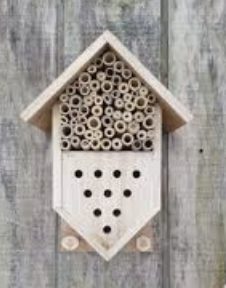OUR QUIET CONSERVATIONISTS
- Regional Victorians Opposed to Duck Shooting Inc.
- Jul 3, 2023
- 3 min read
&
BIRDING BOOMS -
WHAT IT COULD MEAN FOR VICTORIA
World Environment Day Everyday for Committed Conservationists Shying from self-promotion, conservation efforts carried out by many of our supporters and fellow nature-lovers, often go unacknowledged. So, this newsletter pays tribute to them and the selfless work they do. Most regional landowners and residents have an innate desire to protect the environment they live in. They live through the challenges our environment faces; they witness this daily. Consequently, they become protective and emotionally attached to their surrounds, fostering a genuine desire to protect it. Mostly self-funded, their work encompasses a wide range of activities including:
Weed removal and revegetation – clearing invasive species, restoration of natural habitat, reintroduction of locally indigenous plant species, providing food and shelter for wildlife. Some operate propagation nurseries and generously donate surplus native plant stock.
Flora and fauna surveys – monitoring and documenting the region's diverse wildlife population including migratory bird surveys and annual bird counts to help understand the threats on species. Volunteers also actively participate in wildlife care and rescue ensuring injured or orphaned animals receive the assistance they need for rehabilitation and release.
Public education and outreach – engaging local communities, conducting workshops and outreach programs to raise awareness about coexisting with wildlife. By sharing knowledge and promoting innovation and best practice they empower residents to make informed decisions that minimize human-wildlife conflicts and protect the natural environment.
Conservation initiatives with other organisations – together they undertake various activities not limited to water control monitoring, mangrove restoration, erosion control, pest species control.
Seed banks and native plant nurseries – recognizing the importance of preserving local plant species, which play a crucial role in maintaining the region's biodiversity, providing essential resources for wildlife.
Here’s thanks to our unsung heroes quietly going about their tremendous year-round work to conserve our environment across Victoria. :-)
Birdwatching Booms
Meanwhile, the rise of bird-watching among younger folks has been linked to its benefits as featured in Well & Good,
On TikTok—which draws its largest base of users from folks under 24—the hashtags #birdwatching and #birding have over 1billion views and 212m views, respectively. There were also more than 555,000 estimated global participants in Cornell University's 2023 Great Backyard Bird Count—up 44 percent from 2022.
There’s strong evidence to support the mental health benefits of bird-watching. A study published in Scientific Reports found simply seeing or hearing birds was associated with an improvement of mental well-being for up to eight hours. Another study published in Ecological Economics found being around birds was linked to higher happiness levels. So much so that even an additional 10 percent of bird species in the vicinity increased participants' life satisfaction as much as a comparable increase in income.
In Australia, over 1.4 million domestic & international tourists birdwatched in our country, spending over $3 billion AUD in the first year data was collated. (Tourism Research Australia National and International Visitor Surveys 2019).
But do waterbirds pull tourists? Absolutely.
Check out just a few examples below:
In the UK, it's Bitterns and Puffins
In Ohio, Magee Marsh waterbirds help the region tap into the $40+ billion USD birdwatching trend
In Florida, The Everglades National Park is famous for its waterbird attractions
And wetland sanctuaries in India
Regional Victoria is blessed with stunning wetland habitats home to native waterbirds unique to our country.
RVOTDS has long advocated that replacing shotguns with cameras will be a better social and economic deal for Victoria. No investment required. The assets are already here - we just need to stop shooting them.
































